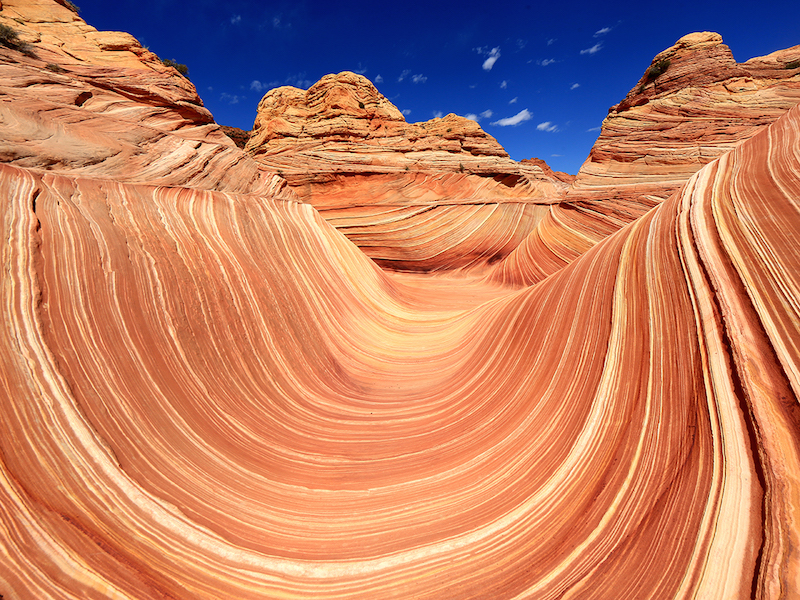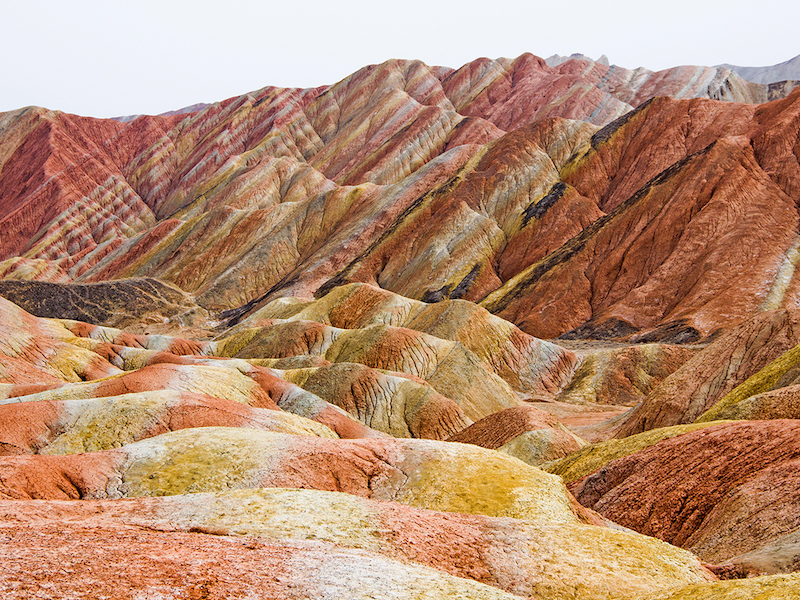
Why Are the Vermilion Cliffs So Red?

If you've ever visited the Grand Canyon, Arizona's Vermillion Cliffs or the astonishingly rainbow-colored hills of China's Zhangye National Geopark, you likely noticed they have one thing in common: red-colored rocks.
How did these rocks get so red? The answer involves iron, which bonds with other elements to form minerals famous for their red, rusty hue.
To start at the beginning, the iron on Earth came from ancient supernova events, the collapse of large stars that ran out of energy and "died." After these stars collapsed (due to extreme gravity at their centers), they released a vast amount of new energy, which fused together elements, creating heavier elements, including iron (Fe).
After the force from such a collapse got too immense, the collapsing star exploded outward, sending the elements into space, said Jessica Kapp, a senior lecturer and associate department head of the geosciences department at the University of Arizona. [Photo Timeline: How the Earth Formed]
"When Earth first formed, it grabbed up a bunch of these elements from the space around it, including iron," Kapp told Live Science in an email.
In Earth's early history, during the Archean era (4 billion to 2.5 billion years ago), there was little oxygen in the atmosphere. Without oxygen, iron can dissolve in water, and so Earth's early Archean oceans carried large amounts of dissolved iron, said Terry Engelder, a professor of geosciences at Pennsylvania State University.
However, single-celled organisms began producing oxygen through photosynthesis — a process that uses sunlight to power a reaction between water and carbon dioxide, leading to the creation of carbohydrates and oxygen.
Sign up for the Live Science daily newsletter now
Get the world’s most fascinating discoveries delivered straight to your inbox.
That oxygen got into the oceans and bonded with the iron, leading to the creation of iron-oxide minerals, such as hematite (Fe2O3), which is often red in color, and magnetite (Fe3O4).
"An oxidation reaction you might be familiar with is rusting — when metal reacts with the oxygen in the air and becomes rust," Kapp said. "In rocks, it is little grains of minerals like hematite and magnetite that have iron in them. Those minerals experience oxidation and become rust, turning the rocks red."
The creation of these minerals led to the formation of the banded iron formations, the most important iron deposits in the world, Engelder said. The formations are "banded" because they contain layers of hematite between layers of silica, which were laid down as sedimentary rock layers during the during the late Archean to mid-Proterozoic (an era lasting from 2.5 billion to 541 million years ago), according to a 2016 study in the journal Geoscience Frontiers.

For instance, banded iron formations appear in Carajas, Brazil; Lake Superior, Canada; Hamersley Basin, Western Australia; regions in northern China; and the Mesabi Iron Range in Minnesota.
In the case of the Vermilion Cliffs in Arizona, the red color comes from iron-rich minerals that are interspersed with the sedimentary rock at that site.
"Red sandstones are very common in the western United States," Kapp said. "[They] can be found in places like Sedona, Arizona, and in the Mojave Desert of California at Red Rock Canyon State Park."
Other red rock formations that contain oxidized iron minerals include the Chugwater Formation in Wyoming, Montana and Colorado and the Redwall Limestone cliff of the Grand Canyon, which was stained red by the iron-oxide minerals leaching out from the layers above it.
Original article on Live Science.

Laura is the archaeology and Life's Little Mysteries editor at Live Science. She also reports on general science, including paleontology. Her work has appeared in The New York Times, Scholastic, Popular Science and Spectrum, a site on autism research. She has won multiple awards from the Society of Professional Journalists and the Washington Newspaper Publishers Association for her reporting at a weekly newspaper near Seattle. Laura holds a bachelor's degree in English literature and psychology from Washington University in St. Louis and a master's degree in science writing from NYU.










